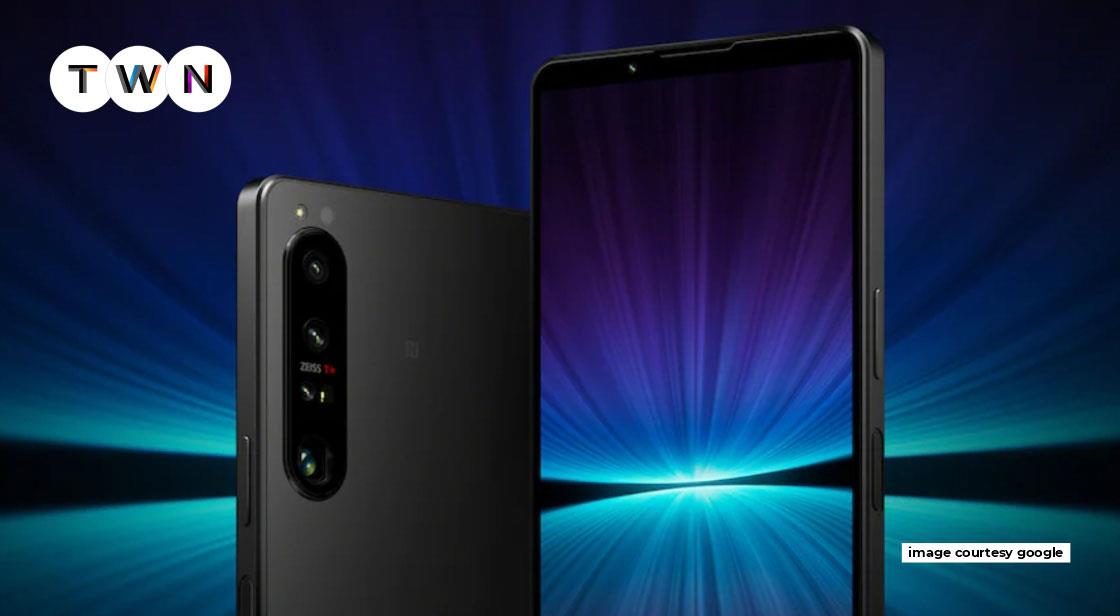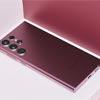Sony is back in the game with Sony Xperia 1 IV

Blog Post
Live streaming and uncensored material are two aspects Sony wants to emphasize with the Xperia 1 IV flagship this year. Sony has struck an exclusive partnership with YouTube, allowing owners of the Xperia 1 IV to Livestream on the platform even if they don't have the requisite amount of followers. If you have the proper cable to connect your Sony Alpha camera to your Xperia smartphone, you can even broadcast.
Sony has finally improved its selfie camera, which may have gone unnoticed but which we believe is significant. It now has a 12MP Sony sensor that can capture 4K HDR video. It was long overdue! #TWN
Sony's traditional Xperia camera phone is back, and it looks better than ever. The new Xperia 1 IV features a 4K display on top of Qualcomm's most powerful Snapdragon chipset and one of the most exciting camera setups with one-of-a-kind continuous optical zoom. And, of course, all of this is wrapped up in one of the most stylish designs available today.
Sony has maintained its design consistency, and the Xperia 1 IV maintains the iconic Xperia shape. A water-resistant smartphone with a good grip for on-the-go photography. Throughout the last few years, this has always been the case. The 4K 120Hz HDR OLED is here to stay, and the Qualcomm Snapdragon 8 Gen 1 chipset has been improved.
Other notable improvements include louder speakers with more bass, a larger battery, and a redesigned rear panel, which now features Gorilla Glass Victus.
The camera has received two necessary improvements, and most people will start there. It still has a 12MP primary camera, a 12MP telephoto camera, a 12MP ultrawide camera, and a ToF camera. However, between 85mm and 125mm, the zoom camera now offers stepless continuous optical zoom (3.5x - 5.2x over the primary 24mm camera). Sure, the Nokia N93 and Samsung Galaxy K Zoom aren't the first smartphones to feature continuous optical zoom, but it's been a while.
SteadyShot with FlawlessEye, Eye AF, and Real-Time Object Tracking is now available on all rear cameras. Real-time multi-frame stacking can also offer a large dynamic range for both SDR and HDR films.
Let's have a look at the specifications now.
At a glance, the Sony Xperia 1 IV specifications
-
Body: 165.0x71.0x8.2mm, 185g; Gorilla Glass Victus front, Gorilla Glass Victus back, aluminum frame; IP65/IP68 dust/water resistance (up to 1.5m for 30 mins).
-
6.50" OLED, 1B colours, 120Hz, HDR BT.2020, 1644x3840px resolution, 21:9 aspect ratio, 643ppi; except for specified use situations, runs at 1096 x 2560 pixels.
-
Octa-core (1x3.00 GHz Cortex-X2 & 3x2.50 GHz Cortex-A710 & 4x1.80 GHz Cortex-A510); Adreno 730; Qualcomm SM8450 Snapdragon 8 Gen 1 (4 nm)
-
256GB/12GB RAM; UFS 3; microSDXC (uses shared SIM slot).
-
Android 12. OS/Software
-
Wide (primary) camera: 12 MP, f/1.7, 24mm, 1/1.7 ", 1.8m, OIS, Dual Pixel PDAF; 12 MP, f/2.3-f/2.8, 80-128mm, 1/3.5 sec ", OIS, Dual Pixel PDAF, 3.5x-5.2x optical continuous zoom, Dual Pixel PDAF; 12 MP, f/2.2, 124, 16mm, 1/2.5 sec. Ultra wide-angle "PDAF Dual Pixel; TOF 3D, 0.3 MP depth 12 megapixels, f/2.0, 20mm (wide), 1/2.9 "with a fixed focus
-
Video recording: 4K@24/25/30/60/120fps HDR, WDR; 5-axis gyro-EIS, OIS; 4K@30fps, 5-axis gyro-EIS; Front camera: 4K@30fps, 5-axis gyro-EIS
-
Fast charging 30W, 50% in 30 minutes (advertised), Fast wireless charging, Reverse wireless charging, USB Power Delivery; battery: 5000mAh
-
Other features include a side-mounted fingerprint reader, NFC, a 3.5mm socket, and native Sony Alpha camera capability.
If anything, the Sony Xperia 1 IV is lacking in features. It includes all of the popular features, such as a 3.5mm audio jack, a MicroSD slot, a hardware two-step shutter, and other Sony extras. There are also additional gaming enhancements such as 120Hz HRR support, 240Hz blur reduction, and game streaming options.
Related: Start An Electronic Business, Secure Your Profit
Bravia Core has arrived in the Xperia universe, and if you're already using it on your TV, you can now use it on your phone as well. A new Music Pro premium service is also available for recording singing and/or instruments and processing them in the cloud for studio-like quality.
Nothing is flawless, and there is one glaring oversight...
What’s Inside The Box Of The Sony Xperia 1 IV
….that's a charger. A cable, too! Sony has not only gone the Apple, sorry, environmentally friendly route, but it has also removed the charger and connection from the box. Because of this, the Xperia 1 IV comes packaged in an extremely thin paper box.
The Sony Xperia 1 IV supports up to 30W USB-PD fast charging, and if you don't have one, you'll have to pay an extra €50 for Sony's 30W XQZ-UC1 charger pack on top of the €1400 you paid for the phone.
Sony Xperia 1 IV Display (4K 120Hz HDR OLED)
The Sony Xperia 1 IV comes with the same superior OLED display as the Xperia 1 III and Xperia Pro-I. It's a 6.5-inch OLED with a resolution of 3,840 x 1,644 pixels, or 4K in common terms. This results in a density of 643ppi, which is extremely sharp. And there's no cutout at all!
As you might expect, the 4K resolution isn't always on because it causes problems on both the hardware (battery depletion) and software (incompatible programs) levels. Like other Sony 4K phones, the Xperia 1 IV is said to render at extended Full HD resolution (2,560 x 1,096 px). Multimedia programs like Photos and video playback take advantage of the full 4K resolution.
The OLED panel, of course, is HDR10 certified and supports native 10-bit pixel colors, which means it can display over 1 billion colors. Although the panel supports a 120Hz refresh rate, it isn't as dynamic as other competitors. When HRR is activated, the phone uses 120Hz most of the time, including games (the Game Enhancer allows you a little more control), and just 60Hz for video playback or incompatible programs (the camera apps, Google Maps, etc.).
However, it has one significant advantage over the Xperia 1 III and Xperia Pro-I 4K OLEDs: it can be 50% brighter when needed. A new real-time HDR video drive is also available, which may boost SDR movies to HDR, albeit it will likely take more energy than usual.
Let's start with the standard display dimensions.
In manual mode, the previous 4K Xperia panel could reach 350 nits, but with the sunshine auto-brightness increase, it could reach 570 nits, or around 650 nits when utilizing Creator mode.
This Xperia 4K display is unique. Whether you're using Standard or Creator mode, auto or custom brightness, it can get up to 600 nits bright. This implies that, unlike the previous generation, there is no brightness limit.
So, when utilizing Standard or Creator modes with their default White Balance settings, we were able to capture 600 nits of maximum brightness.
We achieved the highest achievable brightness of 680 nits by setting the white balance slider to Medium (neutral). The Cool option produces 600 nits of maximum brightness, while the Warm setting produces 620 nits.
Sony Xperia 1 IV Camera
The Xperia 1 IV's telephoto camera has a 12MP 1/3.5" sensor with 1.0m pixels and PDAF. The HW apps identify the sensor as a Sony IMX 650, but we're not sure if this is valid because the IMX 650 is supposed to be a 40MP sensor.
A 12MP Sony IMX 557 1/1.7" sensor with 1.8m pixels sits behind an optically stabilized 24mm f/1.7 lens in the primary camera. Dual-pixel PDAF is also supported.
A 12MP Sony IMX 563 1/2.55" sensor with 1.4m pixels sits behind a 16mm f/2.2 lens on the ultrawide camera. Because this camera has Dual Pixel AF, it should be able to catch close-ups.
A Sony IMX 316 sensor (240x180, 10m) is used in the ToF camera.
The Xperia 1 IV's main camera, like other high-end Xperia phones, delivers excellent daytime images. The 12MP samples are exceptionally detailed and free of noise. The sharpness is also just ideal, crisp but not overly so. The natural rendition is the greatest aspect, especially in the greenery and random detail. Apple should study how this is done.
As stated by Sony, the white balance is consistent across all photographs, and the colors are always vibrant.
The dynamic range is also deserving of praise; it is excellent most of the time, aided by Auto HDR, but it never goes overboard. All of the photographs have a lot of contrast, and some of the shadows are a little darker than we'd like, but that's nitpicking.
Overall, the primary camera on the Xperia 1 IV produces some of the greatest daylight photographs a smartphone can produce these days.
Sony Xperia 1 IV Battery life
The battery of the Sony Xperia 1 IV is 5,000 mAh, which is 10% larger than the one in the Xperia 1 III and Xperia Pro-I. We are pleased to see a battery capacity increase, and given the prior model's poor battery performance, we are quite pleased with this change.
There's even more good news. The Xperia 1 IV received a 100-hour total endurance rating, which is higher than the 1 III and Pro-I.
The Xperia 1 IV managed 27 hours of 3G talk time and fared much better in the on-screen test, with 11 and a half hours of web surfing and 15 hours of video playback on a single charge. We're also pleased to report that standby endurance has improved. Overall, Sony did a good job in all settings, especially for a Snapdragon 8 Gen 1 device.
The Sony Xperia 1 IV supports up to 30W of fast wired charging via USB Power Delivery, and Sony claims it can charge to 50% in half an hour. Wireless charging up to 15W is also supported by the Xperia 1 IV.
Unfortunately, the Xperia 1 IV does not come with a charger because Sony is following in the footsteps of other manufacturers and selling its high-end gadget in a considerably smaller box. They believe it is for the greater good of keeping the environment clean. We still hold a grudge against a move like that that primarily benefits the company's bottom line rather than having a genuine environmental impact, just as we do with other manufacturers.
Most people who can afford such a high-end phone will acquire a charger regardless, just to make sure they get the most out of their investment.
If you need a charger, Sony will gladly provide you with its own 30W XQZ-UC1 PD charger. You can also use any third-party charger that supports USB Power Delivery of at least 30W. Because the Xperia 1 IV does not come with a cable, you will need to purchase one separately.
In several tests, the Xperia 1 IV using a standard USB-PD charger, and a 30-minute charge delivered 47 percent of the promised charge. Given that both the Xperia 1 III and the Xperia Pro-I have 10% smaller batteries, this is in line. It isn't as remarkable as 60W or higher-capable devices, but it is competent and comparable to other high-end phones like the iPhone 13 Pro Max and the Galaxy S21 Ultra.
Sony Xperia 1 IV Performance and benchmarks
The Snapdragon 8 Gen 1 chipset powers the Sony Xperia 1 IV, marking one of the most significant hardware upgrades since the Xperia 1 III and Xperia Pro-I. It's one of a long series of SD8G1 devices that we've already evaluated and tested, so we're not expecting anything special.
The Xperia 1 IV has the most powerful Android processor, therefore thermal handling will determine which phone is the best at handling it.
The Adreno 730 GPU is among the best mobile GPUs currently available, and it all comes down to which phone has it cooled the most efficiently.
Onscreen benchmarks on the Xperia 1 IV are rendered at 1096p rather than 1644p.
Obviously, the Xperia 1 IV boasts the best CPU in the world, as well as one of the best displays available today.
Let us now discuss thermals. The good thing is that the Xperia 1 IV does not get too hot. This is due to the fact that it throttles significantly.
When running at high processor performance for an hour, the Xperia 1 IV maintained 63 percent of its maximum CPU performance. The phone throttled down to roughly 65 percent in the first 5 minutes and stayed there until the end of the 1-hour test.
The GPU stability has deteriorated. The graphics stability of the Xperia 1 IV was 47 percent; after 10 minutes of peak performance, the GPU performance is halved.
Obviously, the Xperia 1 IV boasts the best CPU in the world, as well as one of the best displays available today.
Let us now discuss thermals. The good thing is that the Xperia 1 IV does not get too hot. This is due to the fact that it throttles significantly.
When running at high processor performance for an hour, the Xperia 1 IV maintained 63 percent of its maximum CPU performance. The phone throttled down to roughly 65 percent in the first 5 minutes and stayed there until the end of the 1-hour test.
The GPU stability has deteriorated. The graphics stability of the Xperia 1 IV was 47 percent; after 10 minutes of peak performance, the GPU performance is halved.
Sony Xperia 1 IV Price
The price of the 256GB ROM and 12GB RAM version is $1598.00 on Amazon, and currently, no other version of this smartphone is available on the market.
Pros and Cons of Sony Xperia 1 IV
Pros
-
IP65/IP68 certification, lovely matte design.
-
Without a notch or punch hole, this 4K OLED panel has a 120Hz refresh rate and HDR10 support.
-
Long-lasting battery.
-
Stereo speakers of exceptional quality.
-
Excellent photo and video quality in the daylight (incl. sound).
-
The main camera takes excellent low-light shots.
-
Excellent selfies.
-
No-nonsense Android 12 launcher with 3.5mm jack, microSD, NFC, and 5G.
Related: Explore The World Of Electronics
Cons
-
Only in rare circumstances does the screen automatically transition to 4K, and there is no dynamic refresh rate.
-
There was no charger or even a wire in the box.
-
There is no Night Mode, which would be quite beneficial to UW and Tele cameras.
-
The continuous zoom optical camera is cutting-edge technology, but the image quality isn't up to par.
-
Under excessive stress (even when using the camera), it easily overheats, resulting in severe performance throttling and even refresh rate limiting.
You May Like
EDITOR’S CHOICE












